
 Oh, it is a Worldcon report, I’d better have some subheadings.
Oh, it is a Worldcon report, I’d better have some subheadings.
The Pandemic
Let’s start with the issue that had the most potential for disaster. Earlier this year, DisCon 3 was faced with a difficult decision. They could stick with their original August dates and have to run the convention entirely virtually, or switch to December and have an in-person event with some hybrid features. The membership voted for December. Little did they know that the dates they had chosen would be at the start of the omicron variant wave when infections were spreading like wildfire and governments were afraid to impose new restrictions because of the impeding Christmas holiday. DisCon 3 had the potential to be a massive super-spreader event. It was not, and the convention deserves massive praise for avoiding that.
Of course the convention was not entirely COVID-free. That would have been highly unlikely. In addition to attending the event, members would have been traveling by air, staying in various hotels around Washington DC, and going out to dinner, all of which are likely vectors of infection. According to DisCon3’s final report on December 29th, 30 members of the convention had tested positive at or since leaving the event (and there had been one false positive). This is out of 2,300 people on site. The rate of infection amongst convention goers was substantially lower than the rate of infection in the District of Columbia as a whole.
Substantial tracking information was provided for most of the positive cases, and on the basis of that it does not seem like any particular part of the convention was significantly associated with infections.
DisCon3 attributes its success in controlling infection to their vaccination and masking policy. Perhaps a government or two could take note.
Facilities
Another issue that DisCon3 had to deal with during the year was the bankruptcy of the Marriott Wardman Park, one of the two hotels at which the convention was due to be based. This left them working with substantially reduced capacity and presumably a need to re-allocate space to the rather smaller Omni. Had the convention been full size, which would probably have meant over 5000 members, this might have been a huge problem. Thankfully the pandemic reduced the pressure on space considerably. Every cloud, and all that.
Facilities were also the subject of one of the post-convention controversies. Mari Ness was faced, yet again, with a Worldcon that did not cater effectively for people in wheelchairs. She has written about her experiences at length here.
I hope that everyone has a great deal of sympathy with Mari over what she went through, but with my conrunner hat on I am wracking my brains to see what we can do. Facilities contracts are the biggest financial obligations that any Worldcon has. You need agreement in principle before you can start bidding, and the contracts are usually signed soon after the site selection results are announced. Once you have signed, you are locked into those facilities (unless they go bankrupt), and the only way you can change things is by negotiation, which usually means paying them more money, probably a lot more money.
The level of accessibility that Mari, and other wheelchair users, need is in excess of that required by the Americans with Disabilities Act. While the ADA is a wonderful thing in many ways, once a piece of legislation provides a standard that must be met, corporations will generally do the absolute minimum necessary to meet that standard and no more. So finding a fully accessible facility in the USA will be hard. Finding one in a country that does have something like the ADA is probably impossible.
Of course, Worldcon committees want to advertise themselves as accessible, because otherwise they will get yelled at on social media. So they do, and people like Mari get into trouble.
If we want to ensure that Worldcons are in fully accessible facilities then we need to have a well-qualified inspection team that can check sites during the bidding phase and disqualify them if they are not up to scratch. I’d like to say they could just warn the voters, but sadly accessibility is fairly low on the priority list of most site selection voters. But to have such an inspection team, WSFS would have to be an organisation with teeth, which it is not. Much more of that later.
What I will say is that there are many people, not just disabled people, who cannot attend Worldcon on a regular basis, but who would be happy to buy a reasonably priced virtual membership if attending virtually was possible and provided a satisfying experience. Which brings us to…
The Virtual Convention
I’m sorry to say that, despite having a virtual membership, I didn’t see much of the con live. That’s partly because a lot of it was very late in my time zone, and partly because I was very busy with work stuff as everyone panicked to get projects closed off before the midwinter break. A lot of the program will be available for viewing later, but because of that midwinter break it is taking much longer for DisCon3’s staff to get the video edited and put online. I understand that there was a lot of good programming and I’m hoping I will have time to see some of it.
What I did see were the three virtual panels that I was part of. Things were a little disorganised at the start of the con. My first panel was 25 minutes late starting because one of the hosts did not turn up and the other had received no training. When things didn’t work, she had to go for help. It appears that lack of training was a widespread problem for virtual program staff. All they got was a sheet of instructions. But they all learned on the job and by my third panel it was all very smooth.
DisCon3 did not attempt to do hybrid panels with some participants in the room and some virtual as World Fantasy had done. But they did allocate some in-person attendees to virtual panels, expecting them to log in from their hotel rooms (and possibly from a room provided on site). This seemed to cause a bit of confusion.
The impression that I get from other people is that the audio quality for virtual panels was fine, but the audio quality for in-person panels that were streamed live was not so good. I suspect that a lot of this was to do with the fact that people on virtual panels are very much aware that their microphone needs to be working well, whereas people on in-person panels tend to have very poor microphone technique. If you are going to do streamed panels, moderators need to try to get their panellists to behave, and audience questions should either be repeated by the moderator, or only taken from someone with a mic.
DisCon3 did have a Discord server. The program channels seemed very quiet. Most of the action took place in the fan table channel. I would be interested to see how many virtual members DisCon3 had, and how many joined the Discord, because I was expecting a lot more traffic.
The Physical Convention
I wasn’t there, obviously. The impression I got from reading other people’s con reports is that it went very well. Programming was interesting. There was a masquerade, and the Best In Show, a costume based on John Picacio’s “La Calavera”, looked amazing. I presume that there were a dealers’ room, art show and exhibits area, but I’ve not heard any feedback.
Of course, one of the reasons that I heard so little about the physical convention is that social media was busy yelling about other things. Before we get to that, we need to remind ourselves about the pre-con controversies.
To Lose One Con-Chair…
Early this year, DisCon3 issued policies suggesting that they would only permit a maximum of 4 people to be named as finalists for any work in the Hugo Awards. This was contrary to tradition, and there’s nothing in the WSFS Constitution to allow it. There was a huge fuss, which led to most of the convention’s WSFS Division staff resigning. Then one of the co-chairs resigned. The implication was that the new policy had been forced through by the co-chair against the wishes of the people required to implement it.
Then in June the list of Finalists was released. Once again email was sent to Finalists, this time applying a limit of 4 people (and their +1s) would be allowed at the pre-Hugo reception. Once again it appeared that staff involved with administering the Hugos had not been told, or had been overridden. More staff resigned. And then the remaining co-chair resigned too.
As I remarked on Twitter, to lose one co-chair may be regarded as a misfortune; to lose both looks like carelessness.
I have written about these events in greater detail here.
If two rounds of Hugo controversy were not enough, we also had pre-con site selection drama. There was a late addition to the 2023 contest from Winnipeg. This happened after the change of dates for the convention. When the date changed was announced, DisCon3 said that site selection was closed, and they would not be accepting any more bids. This seemed to be in contravention of the WSFS Constitution that says new bid filings can be accepted up to 180 days before the start of the convention. Eventually DisCon3 relented and allowed Winnipeg to file but, and this is the important point, they did so in such a way as to imply that this was entirely at their discretion, and that the WSFS Constitution was irrelevant.
So what we have here is two rounds of Hugo controversy, and one round of site selection controversy, all three of which arose from DisCon3 believing that they had the right to run things their way, and not follow the WSFS Constitution.
Site Selection At-Con
As the convention began, it immediately ran into controversy when Kevin did something very foolish: he posted the demographic breakdown of site selection votes from the mail-in ballot validation session. This was seen as an attempt by a member of the Winnipeg bid team to influence the vote, and Kevin got fired from his post as Business Meeting Chair.
We had what I think is the worst row we have had in a 26-year relationship. Had I been Chair of DisCon3, I would have fired him too. But we talked it out via email and we both learned a lot in the process.
To understand what went on you first need to know that SMOFdom has been nervous of ballot stuffing for decades. There has been an instance of suspected ballot stuffing in the past, where numerous Hugo ballots turned up with different names but in the same handwriting with the same pattern of votes and payment via consecutively numbered money orders. Thankfully no one has spent enough money on such a project to make a difference. The Puppies had real supporters.
It is also worth bearing in mind that previous non-US/UK Worldcons (Japan, Finland and Ireland) had campaigned by actively appealing to US fans. The Chinese mostly had not. Obviously COVID made it hard for them to get to in-person events, but they hadn’t had much presence at virtual conventions either. Instead they had relied on getting out the local vote.
It is traditional for Worldcons to give information about the demographic breakdown of membership in their progress reports. DisCon3 had not done this. I don’t know why.
Now imagine that you are bidding for a Worldcon in a two-way race. You’ve seen almost nothing of your opponent in the past year. You then arrive at the mail-in ballot validation meeting to discover that your opponent has a couple of thousand votes, filled in electronically, many unsigned and without a home address for the voter, and using email addresses that seem to have been generated automatically. Plus the way in which these people have paid is unusual.
There are, in fact, very good reasons why the Chinese fans’ ballots looked like this. I’ll get to that shortly. But hopefully you can imagine why the Winnipeg bid team was taken aback. The more I talked to Kevin, the more I came to understand that their concern was not just that the Chinese votes looked dubious, but that they felt that the management of DisCon3 had taken a decision not to challenge those votes for fear of bad publicity. Ballot stuffing is one thing but thinking that the convention administering the ballot had taken a decision to turn a blind eye to it is quite another.
Validating the Chinese Votes
What, then, about those Chinese votes? We need to remember that the internet is a very different place in China than in the rest of the world. Most importantly, PayPal and other Western payment systems are banned, and DisCon3 found itself unable to use the most popular Chinese payment platform. So the Chengdu bid had to get creative in helping its supporters pay to vote. Naturally that looks suspicious, but what else could they do?
Also the way in which we, in the Western world, validate our identity doesn’t work as well in China. Street addresses and not a thing in the same way as they are for us, and many Chinese, particularly the younger ones, do not have email addresses. They communicate through social media. So some people had to create email addresses in order to vote.
The number of votes is large – Chengdu had 1950 mail-in votes – but it is a city the size of Los Angeles, and its annual SF convention attracts 50,000 people. In contrast the populations of Finland and Ireland are small compared to Chengdu or LA. China as a whole has a population of 1.4 billion. It is not surprising that the country has a large population of SF fans, especially as their country has only just begun to be a serious player in the space race.
Another factor that suggests there was no conspiracy going on is the fact that 917 more site selection voting tokens were purchased than were actually used. This suggests that a lot of the Chinese fans could not work out how to fill in the ballot at all. If there was some sort of conspiracy in operation, surely they would have turned all of those additional tokens into votes.
As it turned out, however, a major reason why there were so may seemingly suspicious ballots was due to mistakes by DisCon3. The convention had tried to do the right thing in having the site selection ballot translated into French (for the Canadians) and Chinese. However, where the English language ballot had asked for an address, the Chinese one simply asked, “where do you live?” Not understanding what was being asked, many of the Chinese voters had simply responded “Chengdu” or “China”. Furthermore, the voting system included an autoreply which thanked each member for their vote and said that if there were any issues with the ballot then site selection staff would get back to them. None of the Chinese voters got this follow-up. Indeed, I have heard it suggested that the mail-in votes weren’t even looked at prior to the convention.
This put DisCon3’s position in an entirely different light. That is, they were not against strict validation of ballots because they were pro-Chinese; they were against it because it was their fault that so many of the Chinese voters had not filled in their ballots correctly. As is so often the case, when something appears to be the result of malfeasance, a cock-up is a much more likely explanation.
Ballot Fixing?
The internet was in high dudgeon for much of the convention over what people saw as attempts to “fix” the election by throwing out most of the Chinese votes. These were not quite as simple as they seemed. It has been standard practice for a long time for site selection to validate mail-in ballots and throw out any that they deemed dubious. Typically this happens to about a handful of votes, not to almost 2000.
The motion to the Business Meeting was supported by the head of site selection, Tim Szczesuil. I don’t believe that Tim was looking for an excuse to throw out the Chinese votes here. He was being a good bureaucrat in covering his back by going to his political masters and asking for clarification of his powers. The answer he got was that yes, he did have the power to disqualify suspect votes but, as Kevin pointed out at the meeting, this was entirely at his discretion. Therefore he also had the power to allow them if he deemed that there was a good reason for doing so. The Business Meeting basically said that it was up to him. It would not order him to do one thing or another, and equally both allowing and disallowing the ballots was legal.
Come the announcement of the result at the Business Meeting, Winnipeg conceded gracefully. Kevin moved the motion to destroy the ballots, showing that the result had been accepted and put beyond doubt.
A few people have commented that, given all the efforts to bar people from voting that the Republican party has been making over the past couple of years, American Worldcon attendees might be more antagonistic towards apparent suppression of the Chinese vote. However, most of the Americans who attend the BM are also old enough to remember when ballot fraud was suspected of helping George W Bush win the 2000 Presidential election. It goes both ways. The whole question of ballot fairness needs to be looked at.
Can We Fix Site Selection?
Since all of this blew up, people have been talking online about possible ways of making site selection fairer to people who do not share the Western obsession with street addresses. This is all well and good, but I think misses the point somewhat. Let’s start with a bit of history.
Way back in the mists of time, Worldcon took place entirely in person. You voted in person, and all of the ID that you needed was your membership badge. Then mail-in voting started, and there was a need to validate votes. However, this was done separately by the Hugo and Site Selection teams, partially because the ballots were separate, and partly because the electorate was different. SMOFs, being SMOFs, took rather more care over site selection because that’s the thing that really matters to them as con-runners.
However, this makes no sense to the voter. If you are a member of Worldcon in good standing then you should be able to vote in the Hugos, and if you pay the additional advance supporting membership then you should be entitled to vote in site selection. Why is any extra validation needed?
Part of this is historical accident, but part of it is also a result of a refusal of Worldcons to accept that they are part of WSFS. As an example, DisCon3 refused to use the required terminology of “advance supporting membership” on their site selection ballot, instead using the older “voting fee” term which suggests that the payment is simply required to vote, not buying you a membership of WSFS for the year of the Worldcon you are voting on.
It should not be beyond the wit and imagination of fandom to create a membership system that keeps track of each person’s membership status in WSFS and allows them to vote online without any further validation. If people want to insist on an email address, etc., then they should do so when you buy a membership, not take your money and then tell you that it wasn’t good enough.
The problem with this is privacy legislation; things like GDPR. There is already a lot of debate as to how much information individual Worldcons can share with each other, as each one is an independent organisation. The only practical solution is for WSFS membership (and the voting rights that go with it) to be handled centrally. But to do that WSFS would probably have to incorporate.
Is China Safe?
As soon as Chendgu was confirmed as the site for the 2023 Worldcon, the online conversation started to pivot from “those poor Chinese” to “what an awful place China is”. That’s Twitter for you. And presumably other social media venues too.
SMOFdom is mainly concerned that Chinese fandom, having flexed its muscles, will decide to win every Worldcon site selection from now on. As Colin Harris pointed out on File 770, that’s not much different from what US fandom has been doing for decades. More importantly, I think, they would have to want to. I have never yet met a Worldcon committee that, at their end of their convention, was eager to rush into running another one. Chengdu is probably using up the entire fannish resources of China. They would need a lot more people to want to run another Worldcon in a hurry.
China does have a terrible record on human rights. The proposed political boycotts of the upcoming Winter Olympics attest to that. On the other hand, the UK is happy to let refugees drown in the English Channel. The USA is still locking up people trying to cross the border from Mexico and has a major problem with murderous police. Australia has its own refugee issues and Canada has been allowing energy and timber companies to ride roughshod over the rights of native people. There are no easy answers here.
Some people have said that we should not hold Chinese fandom responsible for the sins of their government. That’s a fair point, though I have a sneaking suspicion that some of the people who are saying this are the same people who put poor Yasser Bhajit in real danger from his authoritarian government over his attempt to run a bid for Saudi Arabia.
Other people have complained that they are unable to visit China, either because they work for the US government and its contractors, or because they are of Chinese extraction and have spoken out against the Chinese government. Well, yes. But also Peter Watts and I are banned from entering the USA, and one of the co-chairs of the Chengdu bid was denied a visa to travel to DisCon3. Many people from Muslim countries also find it difficult to travel to the USA.
The short version is that the world is a very shitty place right now and finding a Worldcon site that is safe for everyone is very difficult. Worldcons should offer a high-quality virtual membership for those people who cannot travel. For those who can, my guess is that China won’t be much of an issue. A work colleague of mine spent a lot of time in China in the year before the pandemic. His husband was working there, and the two of them were able to do a lot of tourism together. There are trans women who are famous actors and TV presenters in China. You are unlikely to be arrested simply for being trans the way you would in Dubai. So I think that for most people China will be fine.
Finally, some people have asked whether the Chinese government will insist on having political oversight of the program. That’s mostly a problem for the Chinese fans, who are probably well used to navigating the local political landscape. But I will suggest that those people who are concerned should read a few Ken MacLeod novels, particularly his latest, to find out how state power actually works.
Selling the Hugos?
The final controversy that DisCon3 became embroiled in erupted on Saturday night, or Sunday morning for me. The hotel had experienced an electrical fire in the ballroom which delayed the Hugos for a couple of hours, so I had gone to bed. When I woke up, Twitter was aflame with the news that naming rights for the Hugos had been sold to a notorious arms manufacturer.
As best as I can make out, what happened was this: as part of the pre-Hugo reception, DisCon3 laid on a red carpet for the Finalists. This was a lovely idea. As is traditional, at the end of the red carpet there was a photo area. That was being run by a commercial sponsor, and the backdrop to the photo included the Hugo logo and the logo of the sponsor: Raytheon. Many of the finalists didn’t look carefully at the background, or didn’t know who Raytheon were, and ended up having their photos with that background appear online. Certainly none of were informed in advance that Raytheon would be involved as a sponsor, and the fact that we were not told suggests that DisCon3 knew there was potential for upset.
Historically it has been perfectly OK for a Worldcon to take sponsorship, especially to help with major events such as the Hugo Award ceremony which cost a lot of money to stage. Kevin and I did this on a small scale in Glasgow in 2005 when we ran a slide show to entertain people while they were waiting for the major events to start. In such situations it is always good form to make it clear that the sponsor is associated with the Worldcon and the event, not with the Hugos. There has only been one instance when the Hugos themselves were sponsored. That was in 1987 when a UK Worldcon took sponsorship from the Scientologists. Those of us with long memories still shudder at the thought.
This year’s sponsorship appeared to be very different. As evidenced by this article on Gizmodo, the impression people got was that Raytheon were the official sponsors of the Hugo Awards. Worse than that, because their involvement included photo ops with finalists, those finalists were being used to promote the sponsor.
At any time after this blew up, DisCon3 could have issued a statement to the effect that Raytheon was only sponsoring their convention, or their Hugo Award ceremony, and that they had not sold sponsorship of the Hugos. This might seem a technical distinction, but it is a very important one. They did not do so. The only logical explanation for that is that they had actually sold sponsorship of the Hugos and they could not then deny that without upsetting their sponsor.
They had no right to do that. The Hugos and their service marks are owned by WSFS, not by individual Worldcons. WSFS has a Mark Protection Committee responsible for protecting those service marks. It has a sub-committee called the Hugo Awards Marketing Committee. Kevin is on both committees, and I am on the latter. If sponsorship of the Hugos had been sold, DisCon3 should have sought our permission first.
As it is, we have had a lot of angry emails from people disgusted at “our” decision to accept sponsorship from an arms manufacturer and vowing to boycott the Hugos in future. There’s not a lot we can say.
When is an Apology not an Apology?
Of course, DisCon3 did issue an apology. The con chair, Mary Robinette Kowal, took full responsibility for the decision to accept sponsorship from Raytheon. She did so in part to protect those of her staff who had been involved in the decision. That’s admirable.
However, as part of my work in diversity and inclusion, one of the things I have to do is train people to make good apologies, which means not making apologies that sound like they have been written by a lawyer who is afraid you might be sued if you say too much.
The first rule of making an apology is to accept responsibility. Kowal did that, which is an excellent start. However, I also encourage classes to think about who the apology is made to, and what is being apologised for.
For me, the most notable thing about the DisCon3 apology is that it makes no mention of WSFS or the Hugo Awards. The apology is to the wider SF community for a poor choice of sponsor. The implication here is that DisCon3’s management believed, and still believe, that they had the right to sell sponsorship of the Hugo Awards.
Mr. WSFS, He Dead
There was a great thread on Twitter shortly after the con about how the anarchic structure of WSFS means that when things go wrong, no one is responsible. And if no one is responsible then nothing can ever be fixed. I’ll come back to that in a minute, but a corollary of no one being in charge of WSFS is that a power vacuum is created. Worldcon chairs are moving into that power vacuum. DisCon3 had many high-profile controversies, and most of them were a result in some way of DisCon3 and various chairs acting as if the WSFS Constitution and Worldcon traditions did not apply to them. In many ways they are right.
In theory WSFS can give a Worldcon a slap on the wrist for misbehaviour, but it can’t do that until the following year’s Worldcon, by which time almost everyone has moved on. The theory is that Worldcons will not do terrible things because the fannish public will be angry with them. DisCon3, however, has shown itself to be rather more concerned with what is said on social media than what SMOFdom thinks, and was apparently willing to ride roughshod over the WSFS Constitution if it felt that would go down better with the fannish public.
Much of the problem here is that WSFS has grown well beyond an organisation that can be governed by a town meeting. In theory, WSFS is a participatory democracy, in that everyone has the right to turn up to the Business Meeting and have their voice heard. In practice the BM is inaccessible for the vast majority of WSFS members. They may be busy elsewhere during the convention and unable to devote the time to attending. They may be put off by the complex rules and procedures that the BM uses, which may facilitate debate but can also be used by BM veterans to frustrate newbies who are not as well versed in the process. And of course the BM would be a disaster if it were made virtual. Imagine having a Zoom meeting with several hundred people all wanting to speak.
More to the point, most of fandom does not want a participatory democracy. They want a representative democracy. They want people who will be in charge and take responsibility; people to whom they can complain when things go wrong, and crucially who have the power to fix things without it taking several years of debate in the Business Meeting.
I am firmly of the opinion that if fandom wants the problems with Worldcon and the Hugos fixed, then it must turn WSFS into a proper membership organisation with an elected leadership. Because if it doesn’t then Worldcon chairs will continue to take the power that no one else holds; and will continue to use it. And no one will be able to hold them to account because once their Worldcon is over they can just walk away.
Your choice, fandom: take control, or give it up forever.
Updates
Since this was published I have made more inquiries about who knew about the Hugo sponsorship deal. As far as I can make out, no one involved with Hugo Administration for DisCon3, including the head of WSFS Division, was consulted in advance about the Raytheon deal.
Also since this was published, Robbie Bourget, who was part of the Winnipeg bid, posted this on File 770:
The Site Selection head had already stated that he planned to disqualify over 1500 votes before anyone on the Winnipeg team even saw the votes in any way, shape or form. Then the Chair of the convention told him to reverse that decision. At that point, he asked Winnipeg to submit the motion that was brought to the Business Meeting.
That put the motion to the Business Meeting in a very different light. I think it would have been wrong for Tim to disallow all of those Chinese ballots. I also think it was very foolish of Winnipeg to sign their names to someone else’s motion. And regardless of the rights or wrongs of the issue, I am deeply distrubed at the idea of the chair of the Worldcon overturning the decision of the site selection team. There’s a reason why Hugo Administration teams are taken out of the chain of command. I’d like to see some confirmation of what Robbie said, one way or the other.

 It has taken me a while to get to this book, which has been widely praised elsewhere. I’m very pleased I read it, though not for the reasons I expected.
It has taken me a while to get to this book, which has been widely praised elsewhere. I’m very pleased I read it, though not for the reasons I expected.

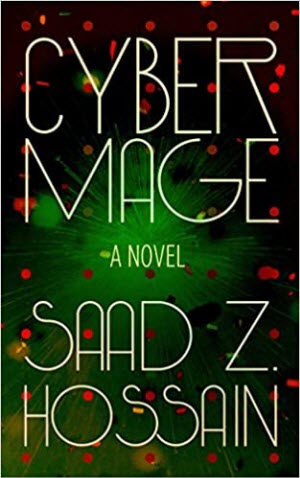 I loved Saad Z. Hossain’s novella, The Ghurkha and the Lord of Tuesday, and was naturally keen to see what he could do with a longer form. I’m pleased to say that Cyber Mage did not disappoint.
I loved Saad Z. Hossain’s novella, The Ghurkha and the Lord of Tuesday, and was naturally keen to see what he could do with a longer form. I’m pleased to say that Cyber Mage did not disappoint.

 I should start by noting that this is by no means a full review. The Faerie Queene, by Edmund Spenser, is an epic poem written in Elizabethan English. It is one of the most studied works in the English language. Someone has probably written a book about the books that have been written about it. I couldn’t do a proper review without taking in at least some of the scholarship that has been produced about it over the intervening 400+ years since it was written.
I should start by noting that this is by no means a full review. The Faerie Queene, by Edmund Spenser, is an epic poem written in Elizabethan English. It is one of the most studied works in the English language. Someone has probably written a book about the books that have been written about it. I couldn’t do a proper review without taking in at least some of the scholarship that has been produced about it over the intervening 400+ years since it was written.

 While I’m waiting for the sequel to Shards of Earth, I figured that I should catch up on what else Adrian Tchaikovsky is up to. Elder Race is a novella from Tor.com. It is edited by Lee Harris, which I mention because he placed 7th in nominations for both Editor Hugos last year and y’all need to get to and vote for him this year. The title suggests something from Lovecraft or Warhammer, but the story is anything but.
While I’m waiting for the sequel to Shards of Earth, I figured that I should catch up on what else Adrian Tchaikovsky is up to. Elder Race is a novella from Tor.com. It is edited by Lee Harris, which I mention because he placed 7th in nominations for both Editor Hugos last year and y’all need to get to and vote for him this year. The title suggests something from Lovecraft or Warhammer, but the story is anything but.

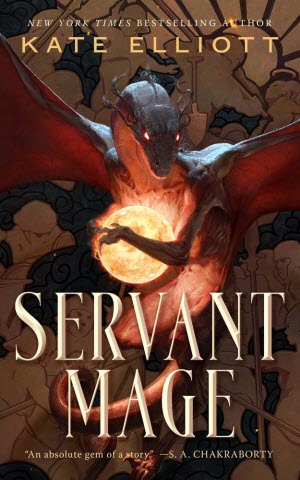 Why yes, this is another Tor.com novella, also edited by Lee Harris. This one is a 2022 release though, so it doesn’t count towards Lee’s Hugo eligibility.
Why yes, this is another Tor.com novella, also edited by Lee Harris. This one is a 2022 release though, so it doesn’t count towards Lee’s Hugo eligibility.

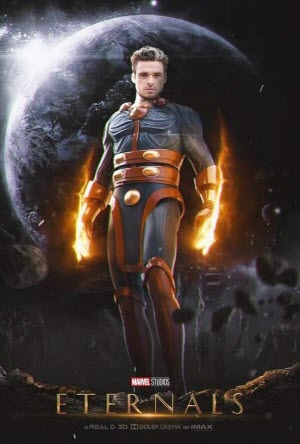 I suspect that it was a surprise to more people than me that the MCU team decided to make use of the Eternals, but they do have a track record of making unusual choices and making them work. This one has got a very mixed reception on Twitter, and I can see why, but I think this new direction for the MCU has promise.
I suspect that it was a surprise to more people than me that the MCU team decided to make use of the Eternals, but they do have a track record of making unusual choices and making them work. This one has got a very mixed reception on Twitter, and I can see why, but I think this new direction for the MCU has promise.
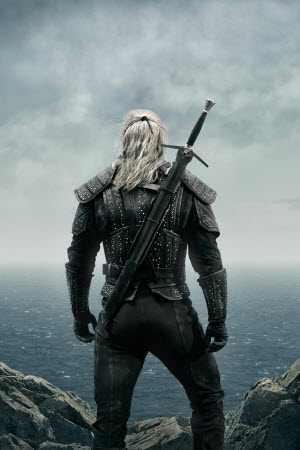 Yes, yes, I know, I am way behind. Too much good TV. But I’m catching up, at least on this one.
Yes, yes, I know, I am way behind. Too much good TV. But I’m catching up, at least on this one.

 This is the December 2021 issue of Salon Futura. Here are the contents.
This is the December 2021 issue of Salon Futura. Here are the contents. Beyond the Hallowed Sky
Beyond the Hallowed Sky Worldcon 79 – DisCon3
Worldcon 79 – DisCon3 The Anthropocene Unconscious
The Anthropocene Unconscious The Green Knight
The Green Knight Supergirl – Season 7
Supergirl – Season 7 The Memory Theater
The Memory Theater Hawkeye
Hawkeye The Necropolis Empire
The Necropolis Empire Titans – Season 3
Titans – Season 3 Editorial – December 2021
Editorial – December 2021
 As most of you will know, there is a bid to bring Worldcon back to Glasgow in 2024. What better way to promote that, than have one of Scotland’s finest writers of science fiction launch a new trilogy that is centred on the building of a faster-than-light craft in a Clyde shipyard? This version of Spaceport Glasgow might not be as chrome-covered and busy as the painting that Jim Burns produced for us in 2005, but it is even more evocative of the setting.
As most of you will know, there is a bid to bring Worldcon back to Glasgow in 2024. What better way to promote that, than have one of Scotland’s finest writers of science fiction launch a new trilogy that is centred on the building of a faster-than-light craft in a Clyde shipyard? This version of Spaceport Glasgow might not be as chrome-covered and busy as the painting that Jim Burns produced for us in 2005, but it is even more evocative of the setting.
 Oh, it is a Worldcon report, I’d better have some subheadings.
Oh, it is a Worldcon report, I’d better have some subheadings. Academic writing, particularly in literary criticism, has a tendency to be meticulously argued, strewn with references to established Theory and Authority, and to use jargon in the manner of Athena’s shield. Anyone gazing upon it is so stupefied with confusion and boredom that they are incapable of responding.
Academic writing, particularly in literary criticism, has a tendency to be meticulously argued, strewn with references to established Theory and Authority, and to use jargon in the manner of Athena’s shield. Anyone gazing upon it is so stupefied with confusion and boredom that they are incapable of responding.
 It took me rather longer than expected to get around to watching this film. So long, in fact, that I decided to save it for Solstice because that seemed a very appropriate time for it. Because I did so, I had the opportunity to see other people’s opinions come in on Twitter. I avoided actual reviews, but there seemed to be a lot of disappointment involved, especially in view of the huge amount of anticipation that the film generated. Clearly this was going to be interesting.
It took me rather longer than expected to get around to watching this film. So long, in fact, that I decided to save it for Solstice because that seemed a very appropriate time for it. Because I did so, I had the opportunity to see other people’s opinions come in on Twitter. I avoided actual reviews, but there seemed to be a lot of disappointment involved, especially in view of the huge amount of anticipation that the film generated. Clearly this was going to be interesting.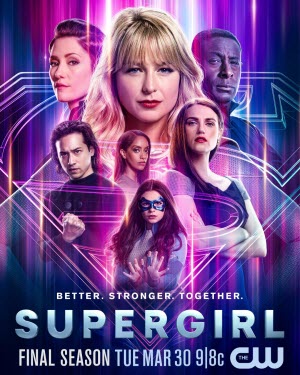 That’s it, then. No more Supergirl to look forward to, apart from possible guest appearances in other Arrowverse shows. I’ll miss this bunch.
That’s it, then. No more Supergirl to look forward to, apart from possible guest appearances in other Arrowverse shows. I’ll miss this bunch.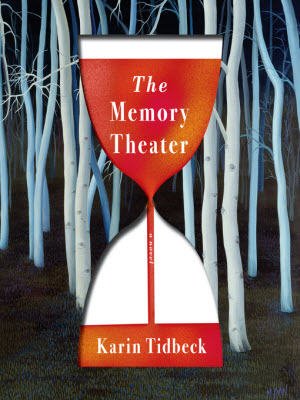 Karen Tidbeck novels are not ordinary things. They ooze strangeness; they twist and morph just when you thought you had a handle on the plot; they disappear off in directions that you didn’t know could exist. The Memory Theater is no exception.
Karen Tidbeck novels are not ordinary things. They ooze strangeness; they twist and morph just when you thought you had a handle on the plot; they disappear off in directions that you didn’t know could exist. The Memory Theater is no exception.
 Caveat time first. The TV series, Hawkeye, is based on a 2012 comic run written by Matt Fraction and illustrated by David Aja. The artwork for the credits sequences and publicity has been based very obviously on Aja’s work, but apparently he has not been compensated, or even credited, at all for this by Disney. This is yet another example of Disney stealing work from creative people. Hopefully some creative lawyers will catch up with them sooner rather than later.
Caveat time first. The TV series, Hawkeye, is based on a 2012 comic run written by Matt Fraction and illustrated by David Aja. The artwork for the credits sequences and publicity has been based very obviously on Aja’s work, but apparently he has not been compensated, or even credited, at all for this by Disney. This is yet another example of Disney stealing work from creative people. Hopefully some creative lawyers will catch up with them sooner rather than later.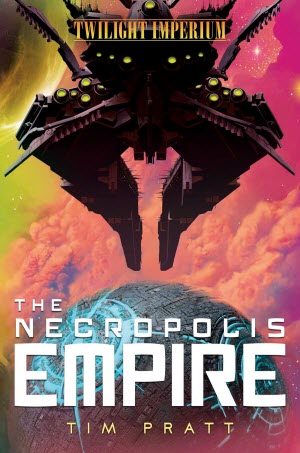 It is, I suspect, a fairly rare thing to find that you have read the middle book of a trilogy and had no idea that there was a preceding volume. Then again, Tim Pratt keeps surprising me.
It is, I suspect, a fairly rare thing to find that you have read the middle book of a trilogy and had no idea that there was a preceding volume. Then again, Tim Pratt keeps surprising me.
 This season of Titans premiered way back in August on HBO, where I could not watch it. However, they finally made it available on Netflix in December and I binged my way through it in rapid time.
This season of Titans premiered way back in August on HBO, where I could not watch it. However, they finally made it available on Netflix in December and I binged my way through it in rapid time.
 This is the November 2021 issue of Salon Futura. Here are the contents.
This is the November 2021 issue of Salon Futura. Here are the contents. Deep Wheel Orcadia
Deep Wheel Orcadia Spear
Spear Shang-Chi and the Legend of the Ten Rings
Shang-Chi and the Legend of the Ten Rings Far From the Light of Heaven
Far From the Light of Heaven World Fantasy 2021
World Fantasy 2021 Black Widow
Black Widow Upright Women Wanted
Upright Women Wanted The BristolCon Art Show
The BristolCon Art Show LosCon 47 in VR
LosCon 47 in VR
 Last issue I reviewed a novel by the highly respected Japanese-American trans woman poet, Ryka Aoki. This issue it is time to come back across the Atlantic to meet another excellent trans poet, Scotland’s Harry Josephine Giles.
Last issue I reviewed a novel by the highly respected Japanese-American trans woman poet, Ryka Aoki. This issue it is time to come back across the Atlantic to meet another excellent trans poet, Scotland’s Harry Josephine Giles.
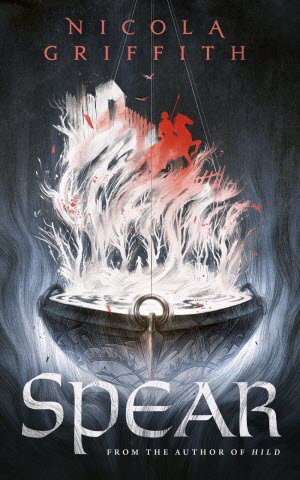 One of the ways in which you can tell that a writer is supremely talented is if they can turn their hand to any genre and excel at it. Nicola Griffith made her name in science fiction, with award winning books such as Ammonite and Slow River. Then she switched to crime for the splendid Aud Torvingen series. She’s written a memoir, And Now We Are Going to Have a Party, which won a Lammy. Her foray into historical fiction, Hild, has been a huge hit. And now she’s shown that she’s equally talented with fantasy. She has already won the World Fantasy Award for co-editing the anthology, Bending the Landscape (with Stephen Pagel). Spear, however, is fiction. To be precise, it is Arthuriana.
One of the ways in which you can tell that a writer is supremely talented is if they can turn their hand to any genre and excel at it. Nicola Griffith made her name in science fiction, with award winning books such as Ammonite and Slow River. Then she switched to crime for the splendid Aud Torvingen series. She’s written a memoir, And Now We Are Going to Have a Party, which won a Lammy. Her foray into historical fiction, Hild, has been a huge hit. And now she’s shown that she’s equally talented with fantasy. She has already won the World Fantasy Award for co-editing the anthology, Bending the Landscape (with Stephen Pagel). Spear, however, is fiction. To be precise, it is Arthuriana.
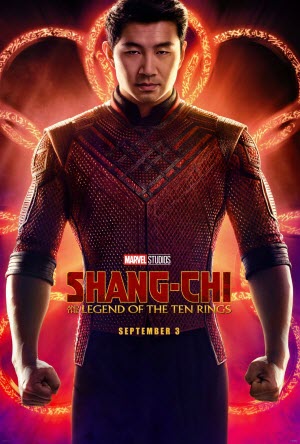 Back in the 1970s the world went a little kung fu crazy. The likes of Bruce Lee and Jackie Chan were huge movie stars, and in 1974 Carl Douglas had a massive international hit with his disco song, “Kung Fu Fighting”. Not wanting to miss out on the craze, Marvel created the character of Shang-Chi, the “Master of Kung Fu”. He first appeared in Special Marvel Edition #15 (December 1973), written by Steve Engleheart and drawn by Jim Starlin.
Back in the 1970s the world went a little kung fu crazy. The likes of Bruce Lee and Jackie Chan were huge movie stars, and in 1974 Carl Douglas had a massive international hit with his disco song, “Kung Fu Fighting”. Not wanting to miss out on the craze, Marvel created the character of Shang-Chi, the “Master of Kung Fu”. He first appeared in Special Marvel Edition #15 (December 1973), written by Steve Engleheart and drawn by Jim Starlin. When you have a very busy life, and plenty of available distractions, but still want to get lots of reading one each month, it is blessing to find a book that you tear through in a couple of days. Such a book is the latest offering from Tade Thompson, and for that I am duly grateful. It is always good to find a science fiction book that keeps you reading because you want to find out what the hell is going on.
When you have a very busy life, and plenty of available distractions, but still want to get lots of reading one each month, it is blessing to find a book that you tear through in a couple of days. Such a book is the latest offering from Tade Thompson, and for that I am duly grateful. It is always good to find a science fiction book that keeps you reading because you want to find out what the hell is going on.
 So, I did it. I travelled by air to a convention in another country and I am still alive.
So, I did it. I travelled by air to a convention in another country and I am still alive. I’ve had this film on disk for some time but haven’t had the time to watch it. Hooray for long distance plane flights. Air Canada had an excellent selection of movies available.
I’ve had this film on disk for some time but haven’t had the time to watch it. Hooray for long distance plane flights. Air Canada had an excellent selection of movies available. Finishing up my Hugo reading required taking a look at this fine novella from Sarah Gailey. It deserves its place in a very strong field.
Finishing up my Hugo reading required taking a look at this fine novella from Sarah Gailey. It deserves its place in a very strong field.
 What with the impending trip to Canada and being stuck behind my dealer table most of the time, I didn’t pay a lot of attention to what was going on elsewhere in BristolCon. That proved to be a mistake, because what they did with the art show is very interesting.
What with the impending trip to Canada and being stuck behind my dealer table most of the time, I didn’t pay a lot of attention to what was going on elsewhere in BristolCon. That proved to be a mistake, because what they did with the art show is very interesting.
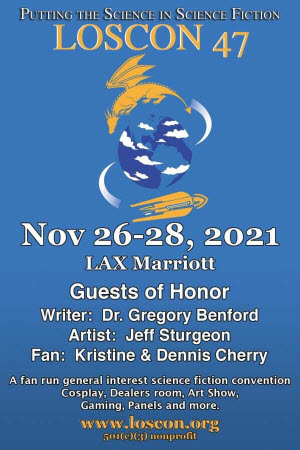 All sorts of experimentation is going on in the world of online conventions these days. The report from World Fantasy talks about how they managed hybrid panels. This year’s LosCon did something similar, but using very different technology.
All sorts of experimentation is going on in the world of online conventions these days. The report from World Fantasy talks about how they managed hybrid panels. This year’s LosCon did something similar, but using very different technology.
 This is the October 2021 issue of Salon Futura. Here are the contents.
This is the October 2021 issue of Salon Futura. Here are the contents. Light From Uncommon Stars
Light From Uncommon Stars The Ministry for the Future
The Ministry for the Future The Past is Red
The Past is Red A Spindle Splintered
A Spindle Splintered A Fledgling Abiba
A Fledgling Abiba Octocon 2021
Octocon 2021 Marvel: What If?
Marvel: What If?
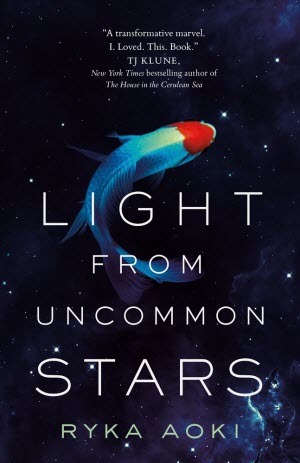 The first thing to say about the debut SF&F novel from acclaimed poet, Ryka Aoki, is that if you were to pitch the idea in just about any writing class you would be shot down in no uncertain terms. This is not just a book that accepted wisdom would say cannot sell, it is one you’d be told quite categorically cannot work. And yet…
The first thing to say about the debut SF&F novel from acclaimed poet, Ryka Aoki, is that if you were to pitch the idea in just about any writing class you would be shot down in no uncertain terms. This is not just a book that accepted wisdom would say cannot sell, it is one you’d be told quite categorically cannot work. And yet…
 COP26 will be held in Glasgow in November. That it is being hosted by a UK government whose attitude towards climate change is almost entirely performative, and only not so when there is an opportunity for grift on the part of ministers, will doubtless overshadow proceedings to a large extent. But one of the invited speakers at the event will be someone who is very much concerned with saving the planet.
COP26 will be held in Glasgow in November. That it is being hosted by a UK government whose attitude towards climate change is almost entirely performative, and only not so when there is an opportunity for grift on the part of ministers, will doubtless overshadow proceedings to a large extent. But one of the invited speakers at the event will be someone who is very much concerned with saving the planet.
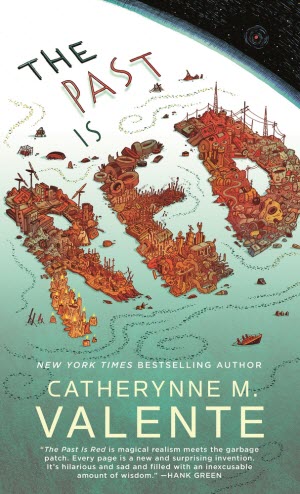 Tetley Abednego has to be one of the most fascinating characters in the history of science fiction. Those of you familiar with the Sturgeon Award winning story, “The Future is Blue”, will already be aware of this. For those who don’t have that story, don’t worry, it is included as a prequel with The Past is Red.
Tetley Abednego has to be one of the most fascinating characters in the history of science fiction. Those of you familiar with the Sturgeon Award winning story, “The Future is Blue”, will already be aware of this. For those who don’t have that story, don’t worry, it is included as a prequel with The Past is Red.
 In her Afterword, Alix Harrow describes this novella as that she has Spider-Versed a fairy tale. This does not mean that she’s race-flipped it and set it in modern day New York. Rather it means that she understands that fairy tales exist in many forms in many different realities. Each world in the multiverse has its own Sleeping Beauty, and every so often those doomed girls get to come together to fight against their fate.
In her Afterword, Alix Harrow describes this novella as that she has Spider-Versed a fairy tale. This does not mean that she’s race-flipped it and set it in modern day New York. Rather it means that she understands that fairy tales exist in many forms in many different realities. Each world in the multiverse has its own Sleeping Beauty, and every so often those doomed girls get to come together to fight against their fate.
 At FanyasyCon I was on a panel about small presses with
At FanyasyCon I was on a panel about small presses with 
 Online conventions are very common these days, so to stand out you have to do something good. There are various ways in which you can do that. FIYAHCon, I understand, had some top quality programming. They paid people for it, and therefore they charged people to attend. FutureCon is free, and has program participants from a range of countries that you would not find represented at other conventions. What can Irish fandom bring to this?
Online conventions are very common these days, so to stand out you have to do something good. There are various ways in which you can do that. FIYAHCon, I understand, had some top quality programming. They paid people for it, and therefore they charged people to attend. FutureCon is free, and has program participants from a range of countries that you would not find represented at other conventions. What can Irish fandom bring to this?